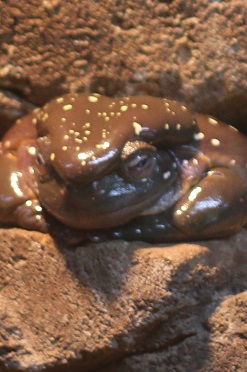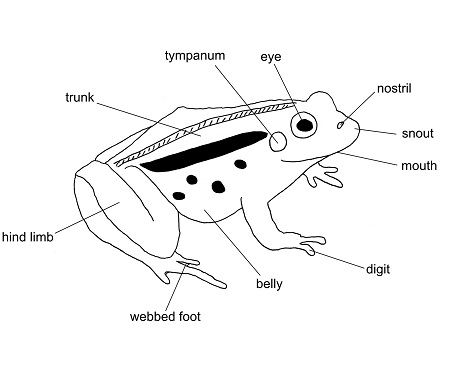Amphibian Zoology
Amphibians four legged animals found in the scientific class Amphibia.
 Amphibians are the only tetrapods laying eggs in a water environment and living at least part of their lifecycles as aquatic animals breathing with the help of gills. Together with fishes they represent a group known as the Anamnia, meaning animals that don’t develop a protective envelope around the embryo and the amniotic fluid during foetal life.
Amphibians are the only tetrapods laying eggs in a water environment and living at least part of their lifecycles as aquatic animals breathing with the help of gills. Together with fishes they represent a group known as the Anamnia, meaning animals that don’t develop a protective envelope around the embryo and the amniotic fluid during foetal life.
All other terrestrial vertebrates have a special membranous sac protecting an embryo in the egg which allows them to develop outside the water environment. These are classified as Amniota.
Amphibians have skins unable to stand dryness for too long, so they need access to water or live in moist environments. Due to their anamniotic characteristic, amphibians’ eggs and larvae (tadpoles) always develop in fresh water. Gills and skin perform respiratory function in young organisms whereas the lungs and skin serve this purpose in adults. No amphibians are adapted to the marine environment.
Amphibian skeletons are bony. Ribs are present in some, absent in others. Amphibians have naked, soft and moist skin with a number of glands opening externally. Apart from having the function of preventing excessive water loss like in reptilians and higher vertebrates, amphibian skin also has the function of an additional respiratory organ, like skin in fish. Sexes are always separate.
Authorities vary in their estimate how many species of amphibians currently exist, but the figure is usually somewhere in the order of 2500 to 6000. This makes Amphibia the smallest class of vertebrate animals. Most of them live in tropical and temperate areas of the world, and usually within reach of freshwater areas.
Order Urodela (Caudata) – Salamanders and Newts
Adults have a lizard-like body shape. They crawl or swim in a snake-like motion. Several species in the family Proteida have both lungs and gill tufts in adults, members of family Plethodontidae are lungless. Several species are found in caves, including the Texas Blind Salamander.
More than 400 contemporary species divided into five suborders and seven or eight families. Absent in Australia, only a few species are found in Africa and South America.
Order Anura (Salientia) – Frogs and Toads
The majority of amphibians belong to this order. The broad head is connected to a short flattened body without a distinctive neck. The tail is absent in adults. The hind limbs are about two (toads) or three (frogs) times longer than front limbs and serve as the main means of locomotion both in water and on dry land. Fertilisation is always external. The larvae (tadpoles) lack limbs and have tails, often with the broad crest increasing body surface, thus helping with respiration. After the limbs and lungs have developed, the tail disappears and the animal starts a more or less terrestrial style of life.
These feed upon insects and other small invertebrates. Many species, especially small tropical frogs, have bright coloration. This colouration can be used to warn potential predators of danger, for example, the poison dart frogs of the family Dendrobatidae. In diversity and beauty of calls, frogs and toads are second only to birds. To decipher these calls, frogs have specialised ears called tympanum which vary in size and are tuned to the calls of frogs of the same species (see Figure 1).
There are at least five suborders in the order Anura with 10 to 27 families separated into 4300 species; scientists described most of these for the first time in the last decades of the twentieth century. They can be found on every continent except Antarctica.
Although they belong to the same order, frogs and toads vary in some ways. As mentioned above, the limbs of frogs are usually longer and are more slender than that of toads. Frogs also have smooth, wet skin whilst toads have rough, dry skin of a warty appearance. Toads usually have two parotoid glands behind the head which contain a toxin for defence. Some frogs also possess these glands, such as the poison dart frog.
Frogs also usually live in close proximity to water, whereas toads can exist on land. By nature, frogs can be both diurnal and nocturnal whereas toads are usually only active by night.

Order Gymnophiona (Apoda) - Caecilians
The caecilians are legless inconspicuous animals which superficially resemble earthworms. They live by burrowing through damp soil and mud, feeding on worms and insects. They have limbless bodies, small jaws, very small eyes and smooth-scaled skin.
They are the only amphibian to carry out internal insemination. In some species larvae metamorphose completely inside eggs, but around 75% of the species are viviparous. They are found in tropical regions including Africa, south-east Asia, South America and Central America.
[27/12/2025 09:29:44]